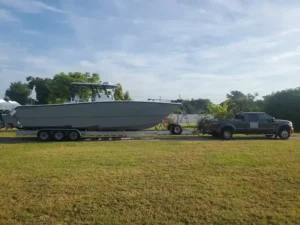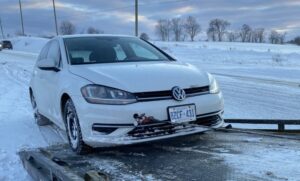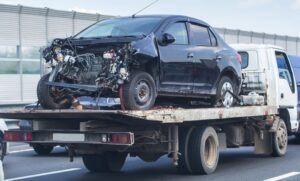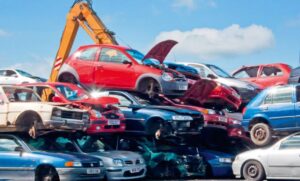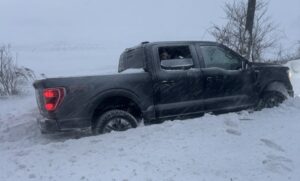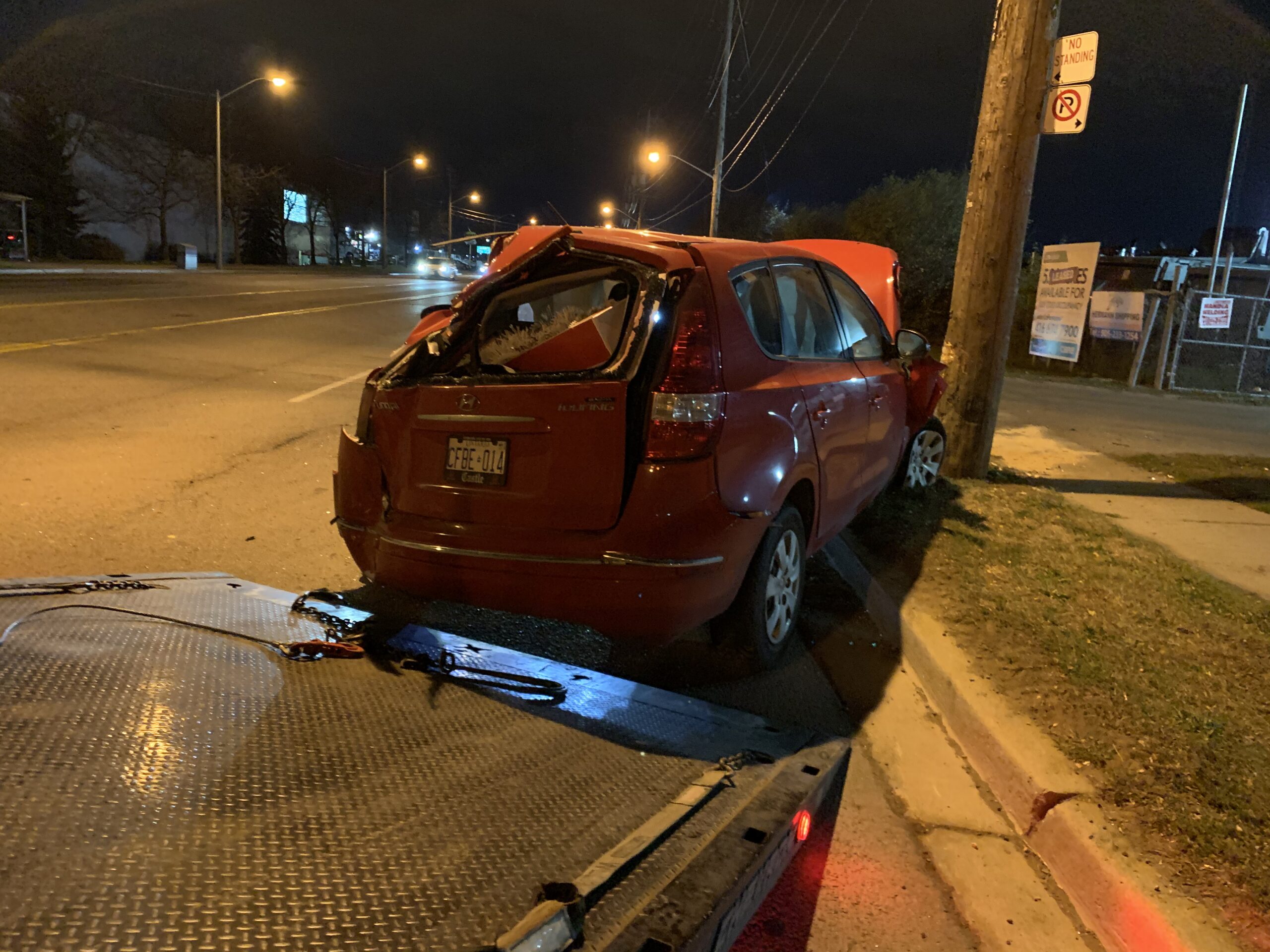A car accident, no matter how minor, is a sudden and jarring event that can leave anyone feeling overwhelmed, disoriented, and anxious. In the immediate aftermath, knowing the precise steps to take is not just about following the law; it’s about safeguarding your physical well-being, protecting your legal and financial interests, and ensuring the safety of everyone involved.
For drivers in Ontario, and specifically in the Aurora area of York Region, how to handle a car accident involves a specific set of provincial laws and reporting procedures. This comprehensive guide, brought to you by the local experts at Pars Towing, breaks down the critical stages of a motor vehicle collision—from the moment of impact to the final steps of your insurance claim—to give you clarity and control during a chaotic time.
- Learn More >>>>> Accident Assistance
Part I: The Immediate Aftermath – Safety and Assessment
The very first moments following a collision are the most critical. Your actions here determine the safety of the scene and lay the groundwork for everything that follows.
1. Stop and Remain at the Scene (It’s the Law)
The instant the collision occurs, you are legally required to stop your vehicle. Leaving the scene of an accident, even a minor one, is a serious criminal offense in Ontario, potentially resulting in heavy fines, license suspension, or even jail time.
2. Prioritize Safety First: Assess Yourself and Others
Take a deep breath. Adrenaline will be surging, which can mask injuries.
- Check Yourself: Are you hurt? Can you move safely?
- Check Passengers: Ask everyone in your vehicle if they are injured.
- Check the Other Vehicle: If you are physically able and it is safe, check on the occupants of any other vehicles involved.
If anyone is injured—even if it seems minor—or if there is any doubt about a person’s condition, call 911 immediately. Do not attempt to move seriously injured individuals unless their life is in immediate danger (e.g., from fire or explosion).
3. Secure the Scene to Prevent Further Accidents
The goal is to move the damaged vehicles out of the line of traffic to prevent a secondary collision.
- Move Vehicles (If Safe): If the damage is minor, the vehicles are drivable, and no one is seriously injured, move the cars to the side of the road, a shoulder, or a nearby safe location. In Aurora, this is especially important on busy roads like Yonge Street or Highway 404 access points.
- If You Cannot Move the Vehicle: If the vehicle is too damaged or moving it is unsafe, leave it in place and immediately get yourself and your passengers to the nearest safe location—behind a guardrail or on the sidewalk.
- Activate Warnings: Turn on your hazard lights. If you have a roadside emergency kit, use road flares, warning triangles, or cones to alert oncoming traffic.
Part II: Reporting and Authorities – Navigating Ontario’s Rules
Knowing when and how to involve the police and official reporting centres is unique in Ontario. Missteps here can delay your insurance claim.
4. When to Call the Police vs. Collision Reporting Centre
In Ontario, the reporting process depends on the severity of the incident.
| Condition | Action Required |
| Injuries | Call 911 immediately. |
| Suspected Criminal Activity | Call 911 (e.g., if you suspect the other driver is impaired or involved in a hit-and-run). |
| Total Damage Exceeds $5,000 (Combined) | Call 911 (or the non-emergency police line). Police must attend and file a report. |
| Minor Damage (Under $5,000) AND No Injuries | Proceed to the nearest Collision Reporting Centre (CRC) within 24 hours. |
- Learn More >>>>> Fast Response for Breakdowns & Accidents
Important for Aurora Drivers: If police do not attend the scene for a minor, non-injury collision, you must report it at a local Collision Reporting Centre within 24 hours. This is where you will file an official police report, and the damage to your vehicle will be photographed.
5. Interacting with Authorities
When police arrive, they are focused on establishing the facts and maintaining road safety.
- Be Honest and Factual: Answer their questions truthfully, but stick strictly to the facts. State your speed, direction, and what you observed.
- Do NOT Speculate or Admit Fault: Your insurance company, not the police, determines fault based on the Fault Determination Rules (FDRs). Simply state what happened: “I was travelling southbound on Yonge Street” rather than “I wasn’t paying attention and ran into them.”
- Get the Officer’s Details: Note the name and badge number of the responding officer(s). Ask for the Police Report Number or the procedure to obtain a copy of the official report, as your insurer will require it.
Part III: Documentation – The Evidence Trail
The quality of the evidence you gather at the scene is critical for a smooth insurance claim. Your phone is your most powerful tool.
6. Exchange Essential Information
Before leaving the scene, you must exchange the following details with the other driver(s):
| Driver’s Information | Vehicle & Insurance Information |
| Full Name and Contact Number | License Plate Number |
| Address | Vehicle Make, Model, Colour, and Year |
| Driver’s License Number | Vehicle Identification Number (VIN) |
| Name of Their Insurance Company | Insurance Policy Number |
| Names of Passengers | Name of the Registered Owner (if different from the driver) |
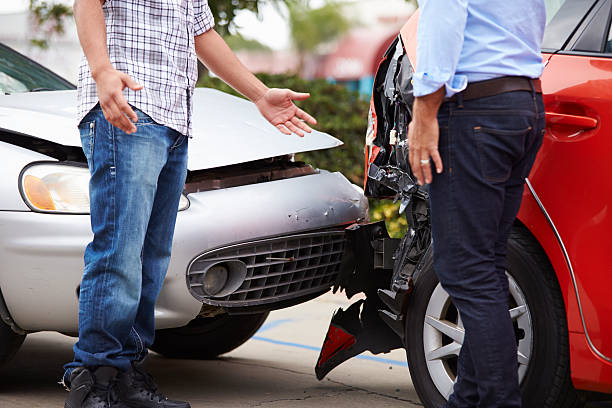
Pro Tip: The fastest and most accurate way to record this is to take clear, close-up photos of the other driver’s license, insurance slip, and vehicle license plate.
7. The Power of Photography: Detailed Scene Documentation
Take copious photos and videos. You can never have too much evidence.
- Damage: Take close-ups of all vehicle damage, then wider shots showing the damage in context.
- The Scene: Capture the entire scene from multiple angles. This should include:
- Tire marks, debris, and broken glass.
- Relevant traffic signs, street lights, and road markings.
- Any weather or road hazards (e.g., ice, standing water).
- Photos showing the final resting positions of the vehicles relative to cross streets or landmarks.
- Visible Injuries: If you or your passengers have any visible scrapes, bruises, or cuts, document them with clear photos.
- Learn More >>>>> Accident Assistance aurora
8. Secure Witness Contact Information
Witnesses who are not involved in the accident provide unbiased accounts. If anyone stops to offer help or mentions they saw the collision, ask for their:
- Full Name
- Phone Number
- Email Address
Ask them if they would be willing to provide a statement to your insurance company. If they are willing, ask them to write down what they saw right away and sign it, or even use your phone’s voice recorder (with their permission) to capture their account.
9. A Crucial Reminder: Never Admit Fault
Even a casual apology can be misconstrued and used against you later to assign fault. In Ontario, fault is determined by your insurance company using the aforementioned government-mandated Fault Determination Rules. Simply be polite, cooperative, and stick to gathering facts, not assigning blame.
Part IV: Towing and Vehicle Recovery – Your Trusted Local Partner
Once the scene is safe and documentation is complete, you will likely need to move your vehicle. Choosing the right tow service is critical, particularly in the Aurora area.
10. Understanding Your Rights Regarding Towing
You have the right to choose the towing company and the destination for your vehicle. You are not obligated to use the first tow truck that arrives, especially if you didn’t call them.
- Beware of “Bandit” Towing: In the Greater Toronto Area (GTA), including York Region, there are instances of aggressive, unsolicited tow truck operators who may try to coerce you into signing an expensive contract or towing your car to a facility of their choosing.
- Never Sign Blank Forms: Read everything before signing. Ensure the service agreement clearly states the destination (e.g., a Collision Reporting Centre, your home, or a trusted repair shop) and the specific, itemized cost.
11. Pars Towing: Your Reliable Accident Assistance in Aurora
When a collision has left you stranded in Aurora, Newmarket, or anywhere in York Region, the stress of recovery is immense. This is where a reliable, local partner like Pars Towing provides invaluable assistance.
Pars Towing specializes in Accident Assistance, which is more than just a standard tow. As a local business familiar with the specific procedures in the Aurora area, they offer:
- 24/7 Rapid Response: Their team is equipped to reach your location quickly, minimizing the time you spend stranded on the roadside.
- Professional, Non-Predatory Service: You can trust that Pars Towing provides transparent pricing and professional service, ensuring your vehicle is handled with care and towed directly to your desired location or the required Collision Reporting Centre.
- Direct Insurance Liaison: Pars Towing can help facilitate the initial recovery process by dealing directly with your insurance company for your convenience, taking one major task off your plate during a stressful time.
Action Item: Keep the Pars Towing contact number saved in your phone right now so you don’t have to search for a number when you’re under stress.
- Learn More >>>>> What to Do After a Breakdown
Part V: The Ontario Insurance and Legal Framework
The Ontario auto insurance system, often confusingly called “no-fault,” requires specific actions to protect your right to compensation and benefits.
12. Notify Your Insurance Company Immediately
You must notify your insurance broker or company as soon as reasonably possible, ideally within seven days. Even if you don’t plan to file a claim, or believe the accident was minor, reporting it creates a paper trail and protects you if the other party decides to file a claim later.
13. Decoding “No-Fault” in Ontario
The term “no-fault” is misleading. It simply means that regardless of who is at fault for the collision, you initially deal with your own insurance company to receive certain benefits, specifically Statutory Accident Benefits (SABs).
- Statutory Accident Benefits (SABs): This mandatory component of your policy provides compensation for things like:
- Medical and rehabilitation expenses (e.g., physiotherapy, chiropractic).
- Income replacement benefits (if you cannot work).
- Caregiver and housekeeping expenses.
- These benefits are available to all injured parties, regardless of who caused the accident.
14. Fault Determination Rules (FDRs)
While you claim SABs through your own insurer, the insurance company will use the government-mandated Fault Determination Rules (FDRs) to officially assign responsibility (0% to 100%). This determination is crucial because:
- It determines who pays your deductible for vehicle repairs.
- It impacts your insurance premiums (an “at-fault” accident usually leads to a premium increase).
- It determines your right to file a Tort Claim against the at-fault driver.
15. The Minor Injury Guidelines (MIG)
For certain minor injuries (like sprains, strains, whiplash), your claim may be categorized under the Minor Injury Guidelines (MIG), which caps the available medical and rehabilitation benefits. If your injury is more severe, your lawyer can challenge this classification to ensure you receive the appropriate level of care.
16. The Tort Claim: When You Sue the At-Fault Driver
If you are not at fault for the collision, and your injuries meet a certain legal threshold (a “permanent serious impairment of an important physical, mental or psychological function”), you have the right to file a tort claim against the at-fault driver for:
- Pain and suffering.
- Economic losses not covered by your SABs (e.g., future income loss).
- Out-of-pocket medical expenses.
Consulting a personal injury lawyer is highly recommended if you or a passenger sustained injuries, as they can help you navigate the complexities of SABs, the MIG, and the tort claim process.
- Learn More >>>>>Accident Assistance oshawa
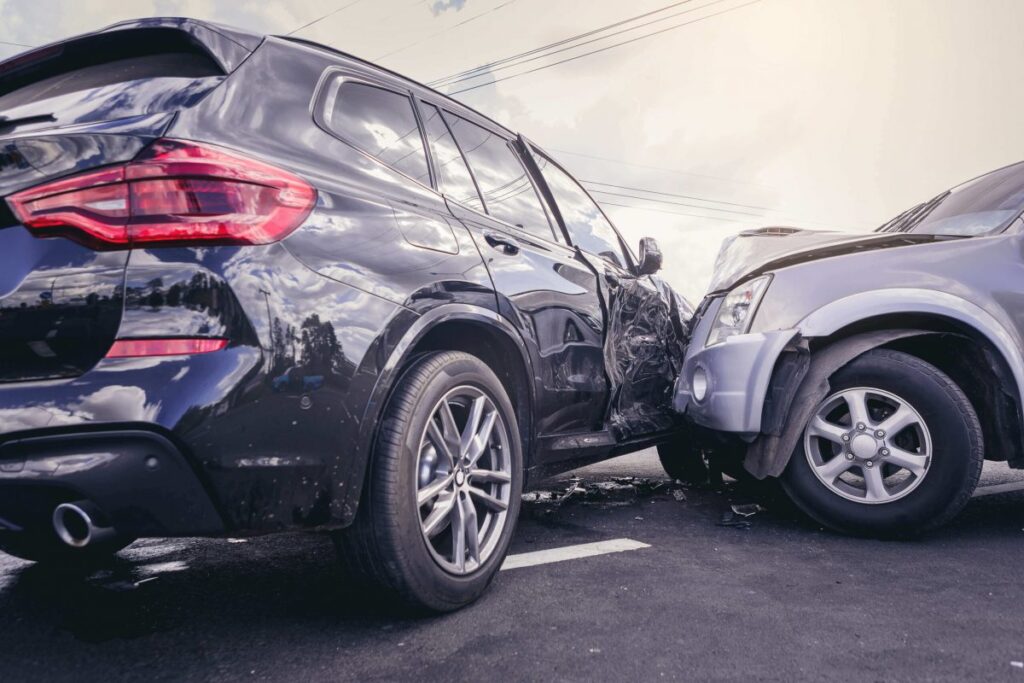
Part VI: Post-Accident Care and Follow-Up
The work is not over once you leave the scene. Several steps must be taken in the days and weeks following the incident.
17. Seek Medical Evaluation (Mandatory)
This cannot be stressed enough: See a doctor immediately, even if you feel fine. The shock of an accident floods your body with adrenaline, which can mask serious symptoms like whiplash, concussion, or internal injuries that may take hours or days to manifest. Prompt medical documentation links your injury directly to the accident, which is vital for any subsequent insurance claim. Follow all recommended treatments and keep detailed records of every appointment and prescription.
18. Organize and Maintain a Detailed File
Your claim depends entirely on good documentation. Start a physical or digital file for everything related to the accident, including:
- The police report number.
- All contact and insurance information gathered at the scene.
- Photos and videos.
- All medical records, bills, and prescriptions.
- Any correspondence from your insurance company, adjusters, or lawyers.
- A log detailing any missed days of work, physical pain, and impact on your daily life.
19. Cooperate with Your Insurance Adjuster
Once you file a claim, an adjuster will be assigned to your case. Be honest and cooperative, providing them with all the documented information you collected. Remember, the adjuster works for the insurance company, so while you should cooperate, do not provide statements that admit fault or minimize the seriousness of your injuries or vehicle damage.
Conclusion
Knowing how to handle a car accident is a form of preparation that every driver in Ontario must possess. While no one wants to experience a collision on the roads of Aurora, having this structured, step-by-step plan ensures that you remain calm, prioritize safety, and protect your legal and financial standing.
From the immediate assessment of injuries and the correct reporting protocols with the York Regional Police or Collision Reporting Centre, to the vital process of documentation and navigating Ontario’s “no-fault” insurance, every step matters.
Should you find yourself involved in an accident in the Aurora or surrounding Ontario area, remember your trusted local partner. Pars Towing is on call 24/7 to provide professional, safe, and reliable Accident Assistance. Save their number today and drive with the peace of mind that comes from being prepared.

